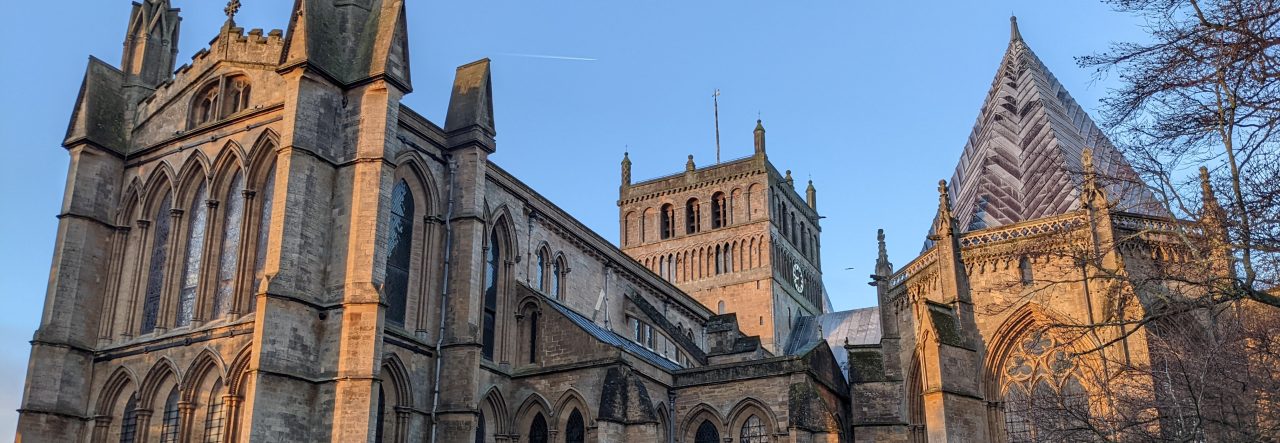Day 6:
 |
| St Etienne, Bourges |
The form of this stunning building is a single very lofty nave of thirteen bays with another five forming an apsidal end. There are no crossings at all: the nave and the apse are surrounded by a double aisle. The inner aisle is very tall and the outer one less so. To support the weight the whole building is surrounded by double flying buttresses.
The Cathedral was begun in 1195 to replace a Romanesque building, deemed too small. By 1245 it was largely complete. It was the first Gothic cathedral built south of the Loire. Besides the harmony of its conception, it has remarkable 13C glass, and the very fine carved portals.
The two towers on the west end of the Cathedral have had mixed fortunes. The southern one was found to be pulling away from the building, a a very large buttress building was erected agandt it to stabilise it. But it was judged too weak to take bells, and it known as the Deaf Tower. The other one, in which the do hand, fell down in the early 16C and had to be rebuilt.
I haven’t had the chance to go round properly, because there is a funeral on: I’m going back later for a tour of the crypt and to look at the glass.
I went back for the last tour of the day, and we were taken down into the so-called crypt. In fact this is a vast structure supporting the apsidal end of the cathedral, which stuck out beyond the city walls and the solid ground of the fortified city. The solution was to build an extra below ground level to support the east end. This is mostly filled with the remains of the late 13C screen, from which the gospel would have been chanted. This was a vast structure, destroyed not by protestants or revolutionaries, but by canons who decided in the 18C that they didn’t like it ! A model of what it looked like, and fragments gathered from all over the city have been put together in a stunning exhibition.
There was also a most extraordinary 16C sculpture of a deposition. The donor, on the right, is kneeling – he is the only person who is not brightly painted.




